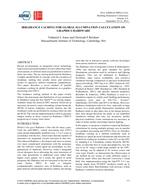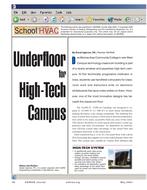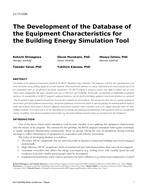On the establishment of a reliable baseline for energysavings estimation, one or more variables are usually used todetermine a model by regression analysis. These regressionmodels generally use one or more independent variables, suchas outdoor air temperature (OAT), degree days, or a combinationof these with occupancy or humidity. Based on a calibratedmultifunction building energy simulation in a hot andhumid climate, in this paper the study of the influence ofoutdoor air intake fraction on the selection of the best parameterto develop change-point regression modeling for coolingenergy use was evaluated. A comparison among regressionsbased on three variables, two regularly used in measuring andverification (M&V) process (OAT and outdoor air enthalpy[OAE]), plus the addition of an operational enthalpy wascarried out. The study included variations of the outdoor airintake fraction in the range of 10%–100%and the developmentof the corresponding patterns of regression models for each ofthe parameters. The results indicated clearly the advantage ofthe use of the operational effective enthalpy (OEE) coolingregression modeling, which produced a lower coefficient ofvariation of the root mean square error(CV-RMSE)and highercoefficient of determination (R2),when outdoor air intake fractionis greater than approximately 15%.
Citation: 2016 Winter Conference, Orlando, FL, Transactions 2016, Vol 122 pt. 1
Product Details
- Published:
- 2016
- Number of Pages:
- 10
- Units of Measure:
- Dual
- File Size:
- 1 file , 4.4 MB
- Product Code(s):
- D-OR-16-034


